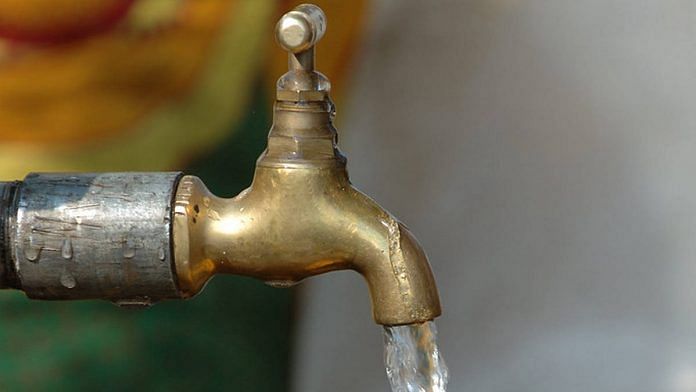Every year since 1993, World Water Day has been celebrated on 22 March as a reminder to spread awareness about the importance and ways of protecting water resources. It is also a day to advocate sustainable management of freshwater, which is key for global progress, the planet’s health and the survival of future generations.
When we talk about water, glaciers melting, rivers drying up and, more specifically to India, inter-state water disputes are what usually dominate the discourse. What gets less attention is the treatment of sewage and wastewater.
What you flush away can be treated and reused for crop cultivation, powering thermal power plants or even for drinking, instead of going to waste. However, the “yuck” factor is a major roadblock. This refers to the stigma and apprehensions associated with wastewater treatment and disgust towards recycled water despite knowing that it is safe for reuse.
On World Water Day, take a look at India’s efforts towards treating wastewater and sewage, the different ways it is repurposed and whether Indians are ready to shed the stigma when it comes to potability.
How treated wastewater is used
India generates almost 62,000 million litres of sewage per day in urban areas, but only 37 per cent of it is treated, according to a 2015 report released by the Central Pollution Control Board. “Unfortunately, that’s the latest data available because the 2015 CPCB report was a one-off all-India survey. Statistics on wastewater treatment are not really being tracked in real-time as it is a State subject. I think the treatment capacity in India has substantially improved since 2015, given the vast investments in the Ganga river basin and in some cities like Hyderabad, Chennai and Bengaluru,” says S Viswanath, a Bengaluru-based water expert and trustee of Biome Environmental Trust.
There has been a huge move to reuse treated wastewater for agricultural purposes, he explains. Treated wastewater has the added bonus of nutrients like nitrogen, potassium and phosphates that lessen the farmer’s dependence on fertilisers during crop cultivation. “Unlike in the cities, the farmer has no hesitation in using treated wastewater,” adds Vishwanath.
Sewage treatment is also common when it comes to reviving dried-up rivers and bringing water back to a community. Sewage or wastewater is treated, sent into rivers and lakes which have run dry and that helps recharge the groundwater, making it readily available to people via borewells or otherwise, as in Dravyavati River Rejuvenation Project in Jaipur.
Also read: Why new policies are needed to tackle India’s orphaned wells with no water
The “yuck factor” explained
The different ways treated sewage is reused can be understood through a pyramid structure. At the bottom are agricultural purposes like irrigation, crop cultivation or river refilling, which are widespread. Next come industries, factories and even thermal plants. Then, less prevalent is urban reuse, which refers to water that is used for landscaping purposes like maintaining lawns or backyards, and includes washing cars.
At the very top of the pyramid is treatment for drinking and potability, which is not as widespread, primarily due to the “yuck” factor. To address the head of the pyramid, Indians might take comfort in knowing that place like Singapore, San Diego, communities in Namibia and Australia have no problem sipping on recycled water. In Singapore, in fact, citizens have widely accepted NEWater, as branded by the Public Utilities Board.
Reportedly, the first apartment complex in India to completely reuse its waste water including for drinking purposes was in T-Zed Apartments in Sarjapur, Bengaluru, in 2017. This inspired a builder to design an RO (reverse osmosis) system to treat and purify water in his own complex. However, there was sharp criticism from people in neighbouring complexes who rejected the idea of drinking water “sourced from garbage and human excreta.. even if it goes through a…purification process”.
“It’s a question of trust and reliability when it comes to drinking recycled water,” explains Vishwanath. “The common membrane bio-reactor technology used for treating sewage for drinking is also just a marginal increase in cost from the technology used for agricultural or industrial purposes. Today, you can buy a kilolitre of treated wastewater for Rs. 18-32,” said S. Vishwanath.
Also read: Coming soon — govt lab in every district where you can test your water supply for toxins




Most countries treat their wastewater to acceptable levels so that it can be returned to the environment – generally rivers and lakes. A dilution rate of 10:1 is aimed for. This gets rid of the ‘yuk’ factor and make the water available for abstraction and treatment for potable use. However, in India, most of the rivers are already polluted so abstraction is deemed impractical. Every catchment needs an overall plan as is practiced in most countries but other factors get in the way. It’s not rocket science.
Is there any financial analysis done to prove that cost of drawing fresh water from natural sources then applying RO and then drinking is costlier than drinking treated wastewater? If you have facts, contact me. I am a researcher interested in sustainable water infrastructure.